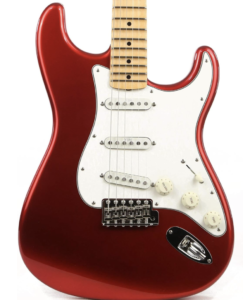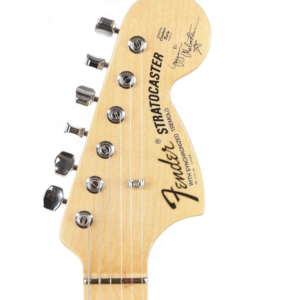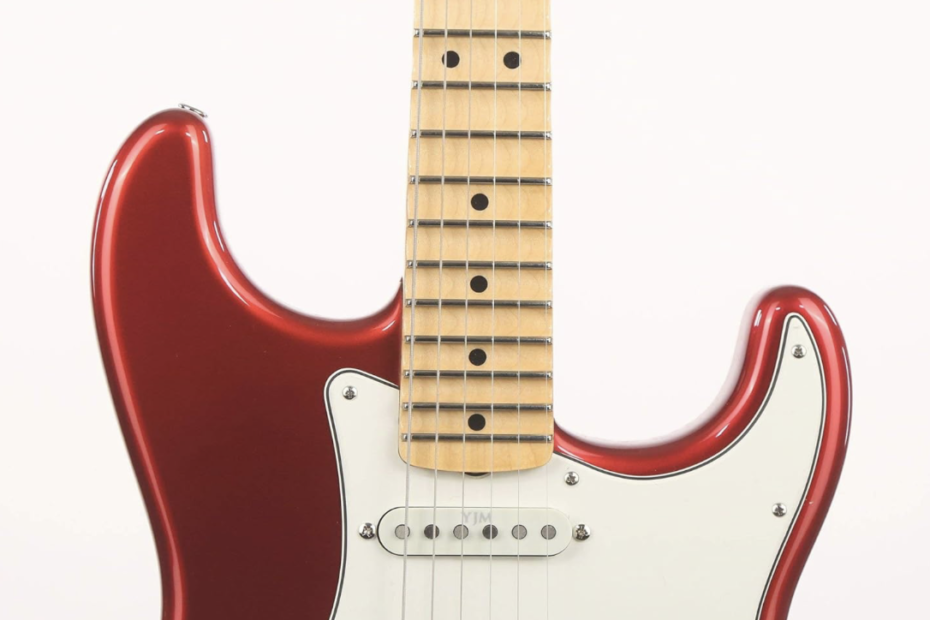When considering Fender Serial Number, remember that Fender, a name synonymous with quality and innovation in the world of guitars, has a rich history that spans over seven decades. Whether you are a seasoned collector, a musician, or simply a guitar enthusiast, understanding the significance of Fender serial numbers can provide valuable insights into the origins, authenticity, and value of these Fender electric guitars. This article goes into the specifics of Fender serial number lookup, offering a detailed guide on how to decode and interpret these alphanumeric codes.
The Importance of Serial Numbers
 Serial numbers serve as unique identifiers for guitars, much like a fingerprint for humans. They help in tracking the manufacturing date, place of production, and sometimes even the specific production run of a guitar. For Fender guitars, serial numbers are crucial in:
Serial numbers serve as unique identifiers for guitars, much like a fingerprint for humans. They help in tracking the manufacturing date, place of production, and sometimes even the specific production run of a guitar. For Fender guitars, serial numbers are crucial in:
- Determining Age: Knowing when a guitar was made can help in understanding its historical context and appreciating its value.
- Verifying Authenticity: Serial numbers can help verify if a guitar is genuine or a counterfeit.
- Assessing Value: Vintage Fender guitars often have higher value. Serial numbers can assist in establishing their age and thus their market value.
- Tracing Ownership: In cases of theft or resale, serial numbers are essential for tracking and recovering instruments.
Also Read:
Fender Double Esquire Relic Custom Shop 1950: Review
Fender Strat Journeyman Relic: Electric Guitar Review
Fender Starcaster: Reviving a Classic
ESP USA M-7 HT Quilted Maple Guitar Review
Why pay $50/hour for lessons when GuitarTricks gives you pro instruction for $15/month? 🤯Join Now
History of Fender Serial Numbers
 Fender has used various serial number formats over the years, reflecting changes in manufacturing locations, ownership, and production practices. The primary eras of Fender serial numbers include:
Fender has used various serial number formats over the years, reflecting changes in manufacturing locations, ownership, and production practices. The primary eras of Fender serial numbers include:
1. Pre-CBS Era (1950-1965)
- 1950-1954: Serial numbers were stamped on the bridge plates of Telecasters and on neck plates of other models. Numbers typically ranged from 0001 to 10000.
- 1954-1963: Stratocaster serial numbers were placed on the neck plate and generally followed a sequential pattern.
- 1963-1965: Serial numbers ranged from L00001 to L99999, indicating guitars made in the early to mid-1960s.
2. CBS Era (1965-1985)
- 1965-1976: CBS (Columbia Broadcasting System) acquired Fender in 1965, and serial numbers during this period were prefixed with an “F”.
- 1976-1985: Serial numbers moved to the headstock decal and included a letter prefix (S, E) indicating the decade, followed by a sequential number.
3. Post-CBS Era (1985-Present)
- 1985-1990: After a group of employees bought Fender back from CBS, serial numbers continued with an “E” prefix for the 1980s.
- 1990s-Present: Serial numbers in the 1990s began with “N” (for the 1990s), and subsequent decades used “Z” (2000s), “US” (2010s), and “JD” for Japanese models.
- Modern Era: Fender has continued using letter prefixes to denote the decade, with increasingly complex serial number systems reflecting global manufacturing in the USA, Mexico, Japan, and other locations.
Stop scrolling. Start strumming. ⏳ GuitarTricks makes learning EASY. Click to Begin!
How to Locate the Serial Number
Depending on the model and era, Fender serial numbers can be found in different locations on the guitar:
- Headstock: Modern Fenders often have the serial number on the back or front of the headstock.
- Neck Plate: Many vintage and some modern models have the serial number stamped on the neck plate.
- Bridge Plate: Early Telecasters and some other models have the serial number on the bridge plate.
- Body: In rare cases, the serial number might be located on the body, under the pickguard, or inside the control cavity.
Decoding Fender Serial Numbers
Example: A Serial Number Starting with “L”
 If you have a Fender guitar with a serial number starting with “L,” it was likely made in the early 1960s. Here’s a step-by-step process to decode it:
If you have a Fender guitar with a serial number starting with “L,” it was likely made in the early 1960s. Here’s a step-by-step process to decode it:
- Identify the Prefix: The letter “L” indicates it was made in the early 1960s.
- Check the Range: Serial numbers ranging from L00001 to L99999 generally correspond to guitars made between 1963 and 1965.
- Consult Fender Resources: Fender’s official website and various vintage guitar databases can provide more precise information based on the specific number.
Example: A Modern Serial Number (e.g., Z5123456)
- Identify the Prefix: The letter “Z” indicates it was made in the 2000s.
- Second Digit: The second digit, in this case, “5,” suggests the guitar was made in 2005.
- Sequential Numbers: The remaining numbers (123456) are the unique identifier for that specific guitar.
Using Online Tools and Databases
Several online tools and databases can assist with Fender serial number lookup. Some popular options include:
- Fender’s Official Serial Number Lookup Tool: Fender provides a tool on their website where you can enter your serial number and get detailed information about your guitar.
- Guitar Dater Project: This website allows users to enter serial numbers for various brands, including Fender, to find out the manufacturing date and location.
- Vintage Guitar and Amplifier Info: Websites and forums dedicated to vintage guitars often have extensive databases and knowledgeable communities that can help identify and date Fender guitars.
Common Issues and Considerations
Inconsistent Serial Numbers
Fender’s serial number system has not always been consistent, particularly during transitional periods or when production was split between different factories. This can sometimes make it challenging to pinpoint the exact year of manufacture.
Reissued and Custom Shop Models
Reissue models and Custom Shop guitars often have unique serial number formats. These may not follow the standard serial number conventions and might require specific lookup resources or direct contact with Fender support.
Counterfeit Guitars
Unfortunately, the market is rife with counterfeit guitars. Serial numbers alone may not be sufficient to verify authenticity. It’s essential to consider other factors such as build quality, hardware, and professional appraisals when determining the legitimacy of a Fender guitar.
Wear and Tear
On vintage guitars, serial numbers can become worn, so you should do the following:

Subscribe to continue reading
Subscribe to get access to the rest of this post and other subscriber-only content.
